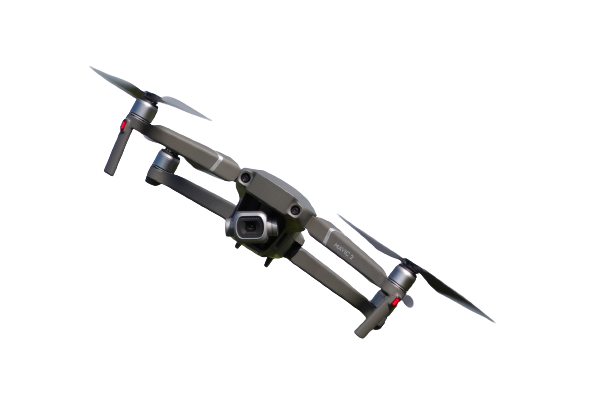Flight distance for consumer drones depends heavily on their size and battery life. Tiny, lightweight drones with small batteries may only travel 1-2 miles on a single charge. In contrast, larger, heavy-duty drones equipped with beefier batteries can reach impressive ranges of 10-20 miles. But that’s not all! Several other factors can influence how far a drone can fly, including its design and the weather conditions.
- Police drones: Typically fly 2–4 miles (3–7 kilometers) from the operator, but some high-end models can fly up to 9 miles (15 kilometers) or more.
- Commercial multi-rotor drones: Can fly 10–15 kilometers
- Fixed-wing commercial drones: Can fly up to 100 kilometers, making them ideal for large-area mapping and surveying
Some of The Popular Drones Ranges
| Drone Model | Maximum Range |
| DJI Mavic Air 2 | 10 kilometers |
| DJI Phantom 4 Pro V2.0 | 7 kilometers |
| DJI Inspire 2 | 7 kilometers |
| DJI Mavic 2 Pro | 8 kilometers |
| Autel Robotics EVO II | 9 kilometers |
| Parrot Anafi | 4 kilometers |
| Holy Stone HS100D | 500 meters |
| Potensic T18 | 300 meters |
| Hubsan H501S | 300 meters |
| DJI Mini 2 | 10 kilometers |
| DJI Mavic Air | 4 kilometers |
| Yuneec Typhoon H Pro | 1.6 kilometers |
| Ryze Tello | 100 meters |
| DJI Phantom 3 SE | 4 kilometers |
| DJI Phantom 4 | 7 kilometers |
| DJI Phantom 4 Advanced | 7 kilometers |
Key Points about Drone Flight Range
| Factor | Description | Impact on Range |
|---|---|---|
| Drone Type | – Multirotor vs Fixed-wing | – Multirotor: Less range due to drag and weight. |
| – GPS vs Non-GPS | – GPS: Can fly further and more accurately. | |
| – Military vs Consumer | – Military: Can fly much farther (e.g., MQ-9 Reaper – 1,150 miles). | |
| Battery Capacity | More capacity allows for longer flight time. | Larger battery = Longer range (ideally 2-3x). |
| Payload Weight | Heavier payload requires more energy to fly. | Heavier payload = Shorter range. |
| Weather Conditions | Wind, rain, cold temperatures reduce battery performance. | Bad weather = Shorter range. |
| Flying Styles | Aggressive flying uses more battery power. | Efficient flying = Longer range. |
Drones offer incredible versatility, but picking the right one hinges on two key factors: range and endurance (flight time). Here’s a quick guide to help you choose the perfect drone for your needs:
What Affects Range and Endurance?
- Drone Type: Hobby drones fly shorter distances (a few hundred meters to a few kilometers) compared to professional models that can reach several kilometers or even tens of kilometers.
- Battery Capacity: Bigger batteries mean longer flights. Hobby drones typically fly 10-30 minutes, while professional drones can stay airborne for hours.
- Weight: Heavier drones burn more battery to stay aloft, resulting in shorter flight times and range.
- Wind and Temperature: Wind drains battery life and reduces range, while high temperatures can overheat the battery, further impacting flight time.
Maximizing Flight Time and Distance
- Choose a Drone: Prioritize high-capacity batteries and lightweight design.
- Fly Smart: Choose calm, windless days for optimal performance.
- Pack Light: Avoid unnecessary weight from accessories or payloads.
FAQ’s
Can a drone fly 1,000 km?
1,000 kilometers is a very long distance! Most drones, even high-end professional models, wouldn’t be able to travel that far.
Can a drone fly 200 km?
200 kilometers is still a significant distance. Some high-end professional drones might be able to reach that range, but it depends on factors like battery life and weather conditions.
What is the maximum range of a drone?
Here are some key things to keep in mind:
Factors affecting range: The maximum range of a drone depends on several factors, including the type of drone, the battery life, the altitude, and the weather conditions. For example, smaller drones with less powerful batteries will have a shorter range than larger drones with more powerful batteries.
Average range of Drone Flight Range: On average, most consumer drones have a range of around 2 to 7 kilometers, or about 1.2 to 4.3 miles. However, some professional-grade drones can have ranges of up to 30 kilometers or more.
Drones Regulations: It’s important to note that the maximum range of a drone may be limited by regulations in your area. For example, in the United States, the Federal Aviation Administration (FAA) requires that drones stay within the operator’s line of sight at all times, which limits their range.
Can a drone fly without headings?
Yes, a drone can fly without headings. Headings are simply the direction that the drone is facing, and while they can be useful for navigation, they are not strictly necessary. In fact, many drones have features like GPS or obstacle avoidance that can help them navigate without relying on headings. Here are a few things to keep in mind:
- GPS: Most modern drones come equipped with GPS, which can help them maintain their position and navigate to specific waypoints. This means that even if the drone isn’t facing in a specific direction, it can still follow a predetermined flight path.
- Obstacle avoidance: Some drones are also equipped with obstacle avoidance sensors, which can help them navigate around obstacles even if they are not facing in the correct direction.
- Manual control: Of course, if you’re flying a drone without GPS or obstacle avoidance, you’ll need to rely on manual control to ensure that it stays on course. This can be more challenging, but with practice, it’s possible to fly a drone without headings.
What are the risks of flying a drone beyond its range?
Drones react differently depending on their design. Some may hover, land, return home automatically, or lose control and fall.
- Loss of signal: If your drone flies beyond its range, you may lose signal with the controller, which means you won’t be able to control it or receive telemetry data. This could cause the drone to fly out of control or crash.
- Battery failure: Flying a drone beyond its range can also drain the battery faster than normal, which could cause it to fail mid-flight
How far can drones fly?
The range depends on the drone model. Here’s a breakdown:
- Toy drones: Up to 100 meters (330 ft)
- Hobby drones: Up to 4 kilometers (2.5 miles)
- Multi-rotor drones: Up to 15 kilometers (9.3 miles)
- Fixed-wing drones: Up to 600 kilometers (373 miles)
What happens when a drone goes out of range?
- Safe return (ideal scenario): Some drones have fail-safes that return them to the launch point if they lose connection.
- Crash or loss: Drones without fail-safes or if fail-safes malfunction, may crash or become lost when out of range.
Is there a maximum safe range for drones?
- Visual Line of Sight (VLOS): EU regulations require maintaining visual contact with your drone throughout its flight.
- Beyond Visual Line of Sight (BVLOS): Requires a special permit for operating drones out of sight.
What are the benefits of long-range drones?
- Agriculture: Large field scouting and data collection in single flights.
- Mapping: Efficient creation of detailed 3D maps over large areas.
- Safety and security: Enhanced monitoring of large areas like construction sites.
- Search and rescue: Effective tool for locating missing people over large areas.
- Package delivery: Delivery of goods over longer distances.
- Improved user experience (hobby drones): Stronger signal for better video reception.
How are drone regulations changing with autonomy?
As drones become more autonomous, regulations are likely to evolve to address safe operation beyond visual line of sight.
What are Factors Affecting Flight Range?
- Drone Design and Components: Battery capacity, weight, size, motor efficiency, and design optimization all impact how far a drone can fly.
- Environmental Conditions: Wind, rain, temperature, altitude, and air density can affect flight range.
- Operational Factors: Flight style, payload weight, and signal strength all influence how much energy a drone uses during flight.
- Regulations: Legal restrictions like staying within visual line of sight (VLOS) can limit flight distance.
How Far Can You Fly Legally?
Regulations around the world typically require drones to be flown within VLOS, which is generally around 0.25 to 0.5 miles.
Beyond Visual Line of Sight (BVLOS) Operations
Special permissions and advanced technologies are required for BVLOS flights, allowing for activities like delivery services and large-scale inspections.
How Do Different Types of Drones Vary in Range?
- Military Drones: Range varies depending on purpose, with small tactical units flying up to 90 kilometers and large HALE drones exceeding 12,000 miles.
- Commercial Drones: Multi-rotor models can fly 10 to 15 kilometers, while fixed-wing models can reach up to 100 kilometers.
- Police Drones: Range can vary, with some models flying up to 200 kilometers for extended operations.
How Can You Increase Your Drone Range?
- Optimize Antenna: Positioning and using high-gain antennas can improve signal strength.
- Reduce Signal Interference: Fly higher, remove obstacles, and avoid areas with high Wi-Fi activity.
- Modify Drone Settings: Update firmware, optimize transmission systems, and consider using range extenders.
- Be Mindful of Conditions: Fly in optimal weather and adjust for environmental factors.
- Upgrade Software and Hardware: Update software and consider advanced hardware modifications (for experienced users).
What is Drone Classifications by Range?
- Very Close-Range (up to 5 km): Recreational use
- Close-Range (up to 50 km): Military surveillance, aerial photography
- Short-Range (up to 150 km): Surveillance, mapping, utility inspections
- Mid-Range (up to 644 km): Military applications
- Long-Range (over 644 km): Military surveillance, weather tracking, mapping
How Are Drones Controlled from Far Away?
- Remote Controls: Most common method using radio frequencies.
- Computer Interfaces: Used for complex operations with precise navigation.
- Advanced Communication Systems: Long-range drones use enhanced radio or satellite communication.
- Autonomy: Pre-programmed routes allow drones to perform tasks with minimal human intervention.
How Far from an Airport Can I Fly a Drone?
Regulations vary by country. In the US (controlled airspace):
- Authorization is required to fly within 5 miles of airports.
- Use the FAA’s LAANC system to obtain authorization.
In uncontrolled airspace (US):
- There is no specific distance requirement, but you must yield to manned aircraft.
- It’s good practice to notify the airport beforehand.
Read More
Black Falcon 4K Drone
Can You Use a Drone to Recover Deer?
How High Can a Drone Fly?
A Comprehensive Guide to Drone Parts
The Amazing Black Hornet Drone: Revolutionary Military Technology
Programmable Drones: The Future of Aerial Innovation
Tactical X Drone: The Ultimate Review
Best 5 DEERC Drones to Buy
Best 22 Mini Drones to Buy

